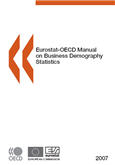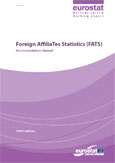Eurostat Manual on Business Demographic Statistics

Demand for statistics on business demography has grown and developed considerably in recent years. Data on births and deaths of enterprises, their life expectancy and the important role they play in economic growth and productivity, as well as the information they provide for tackling social demographic issues, are increasingly requested by policy makers and analysts alike... more »



